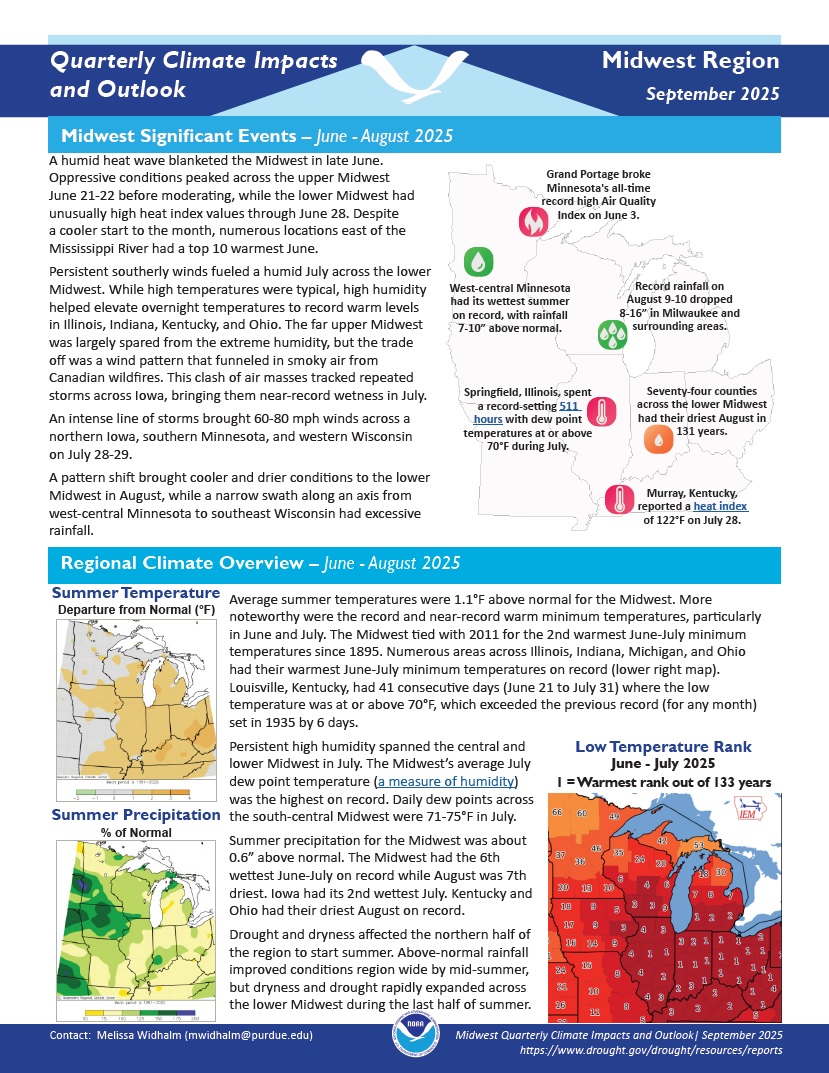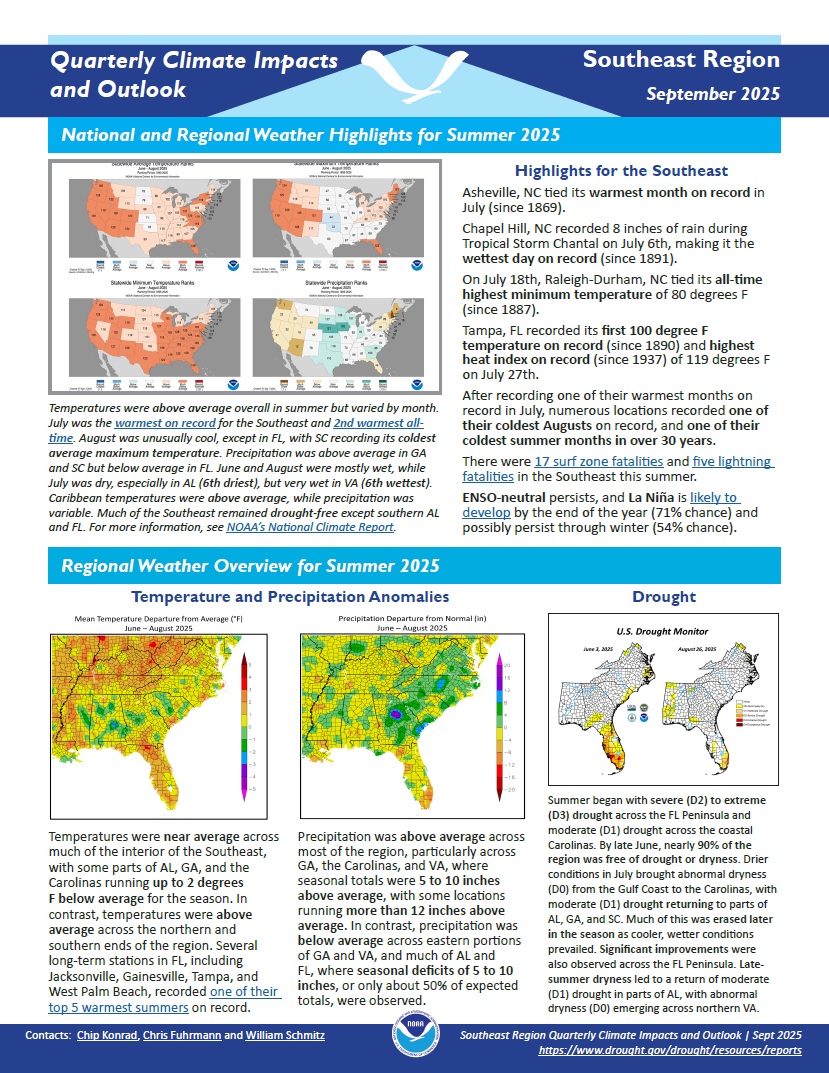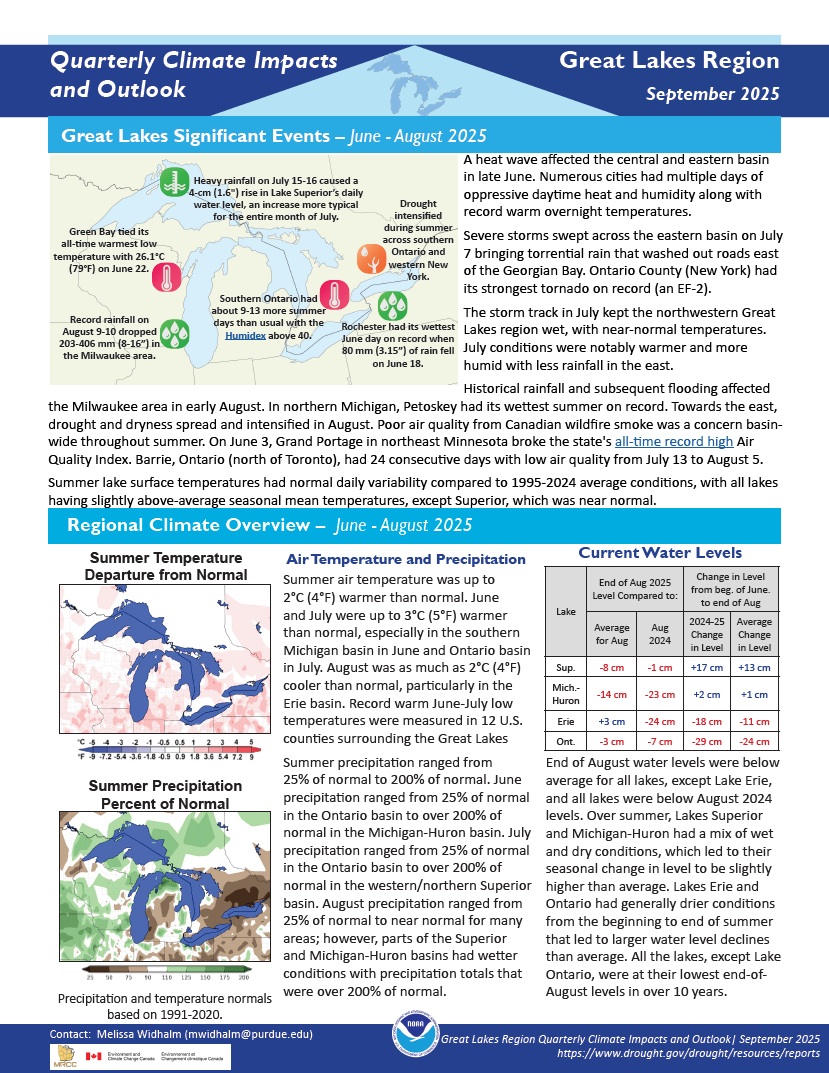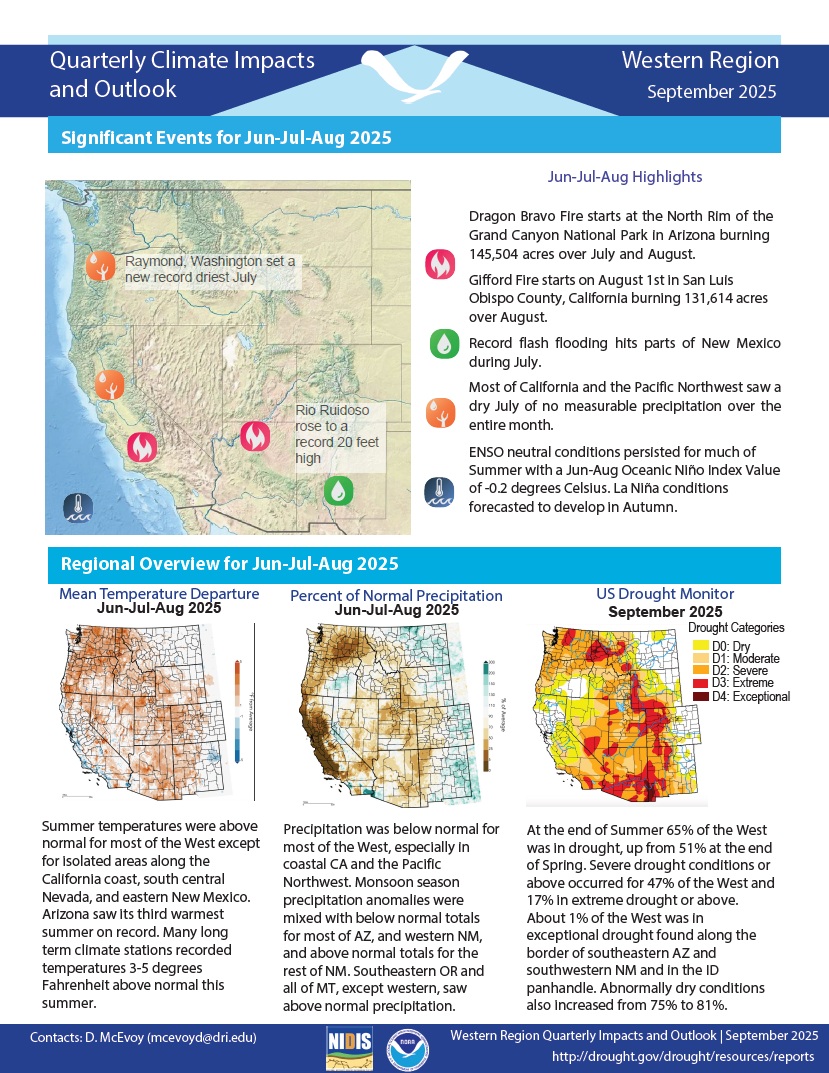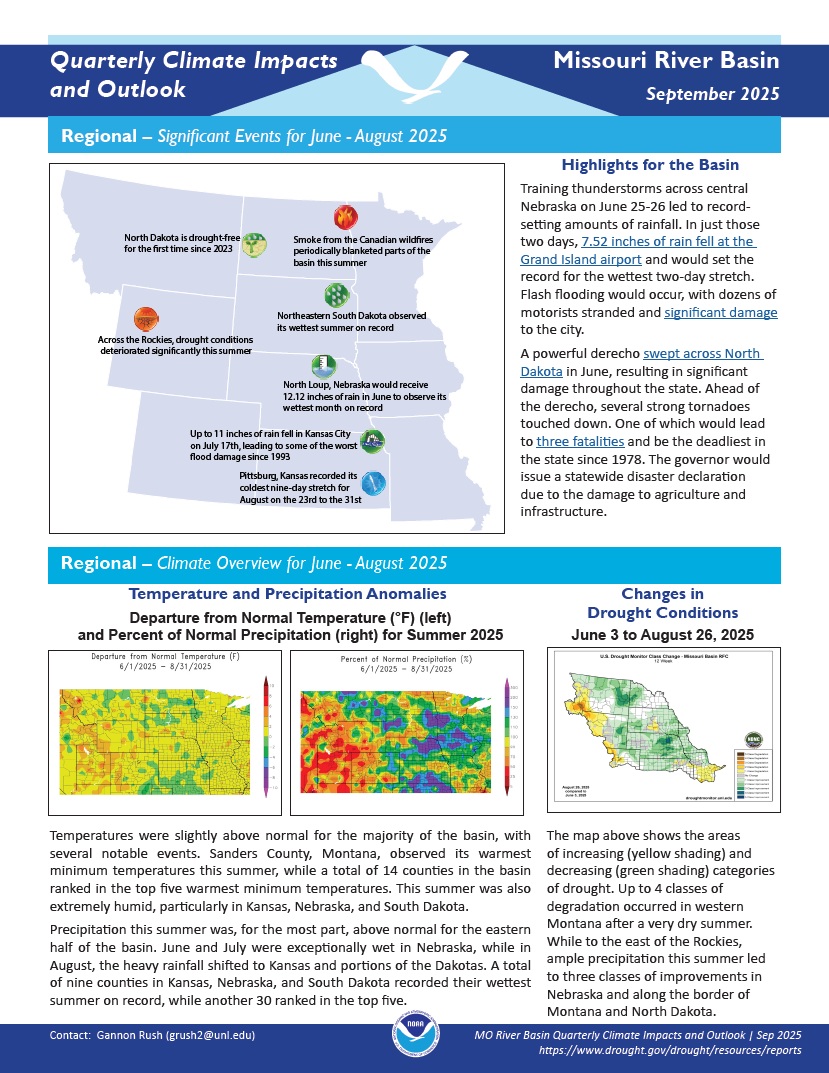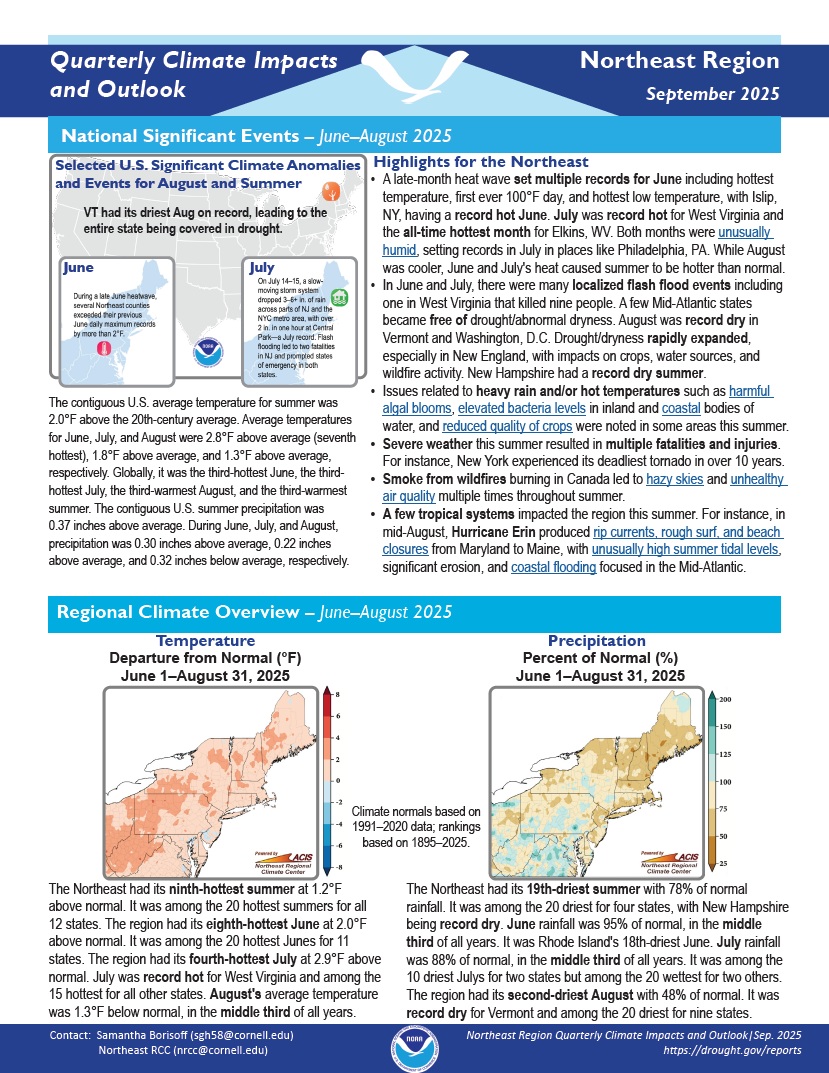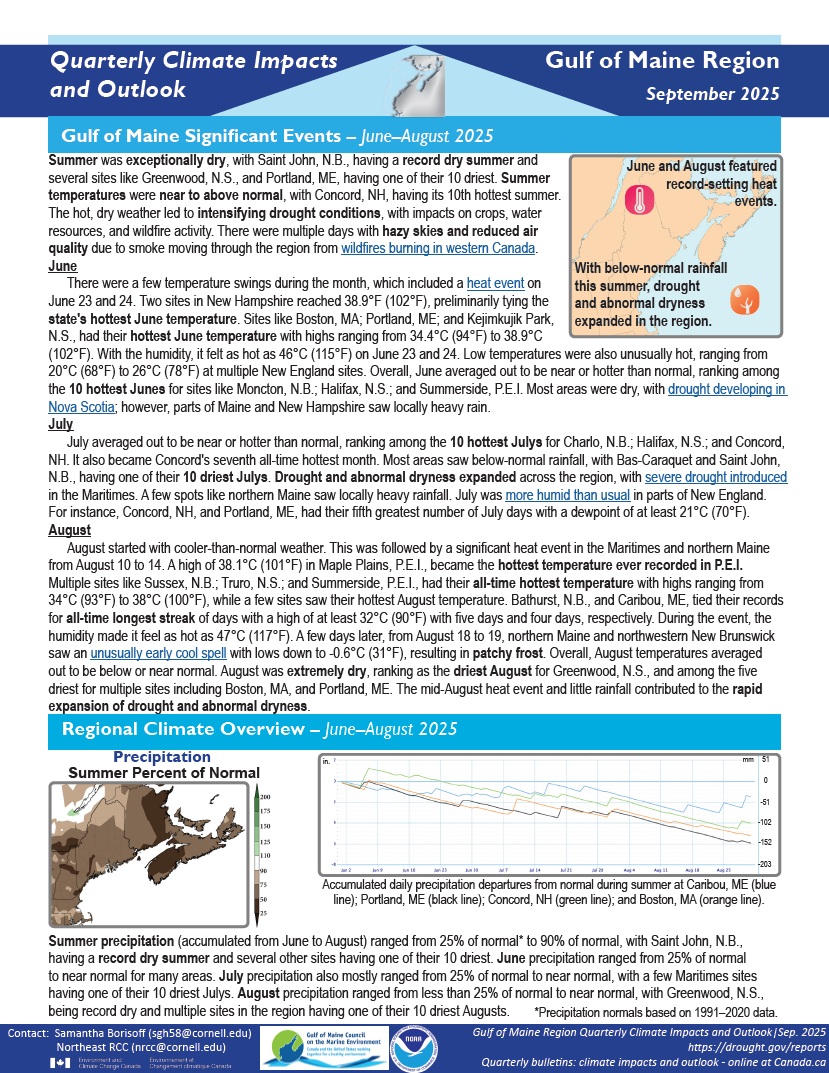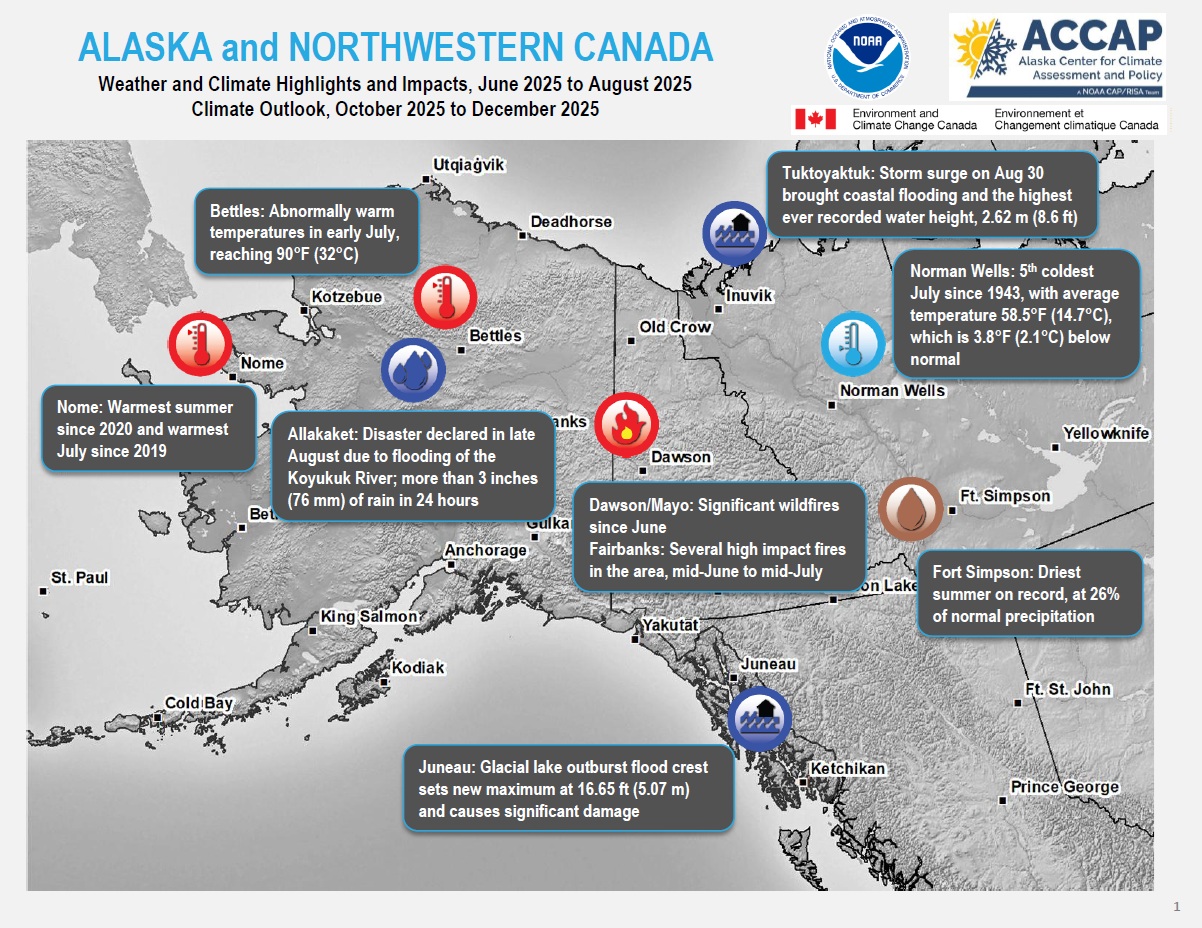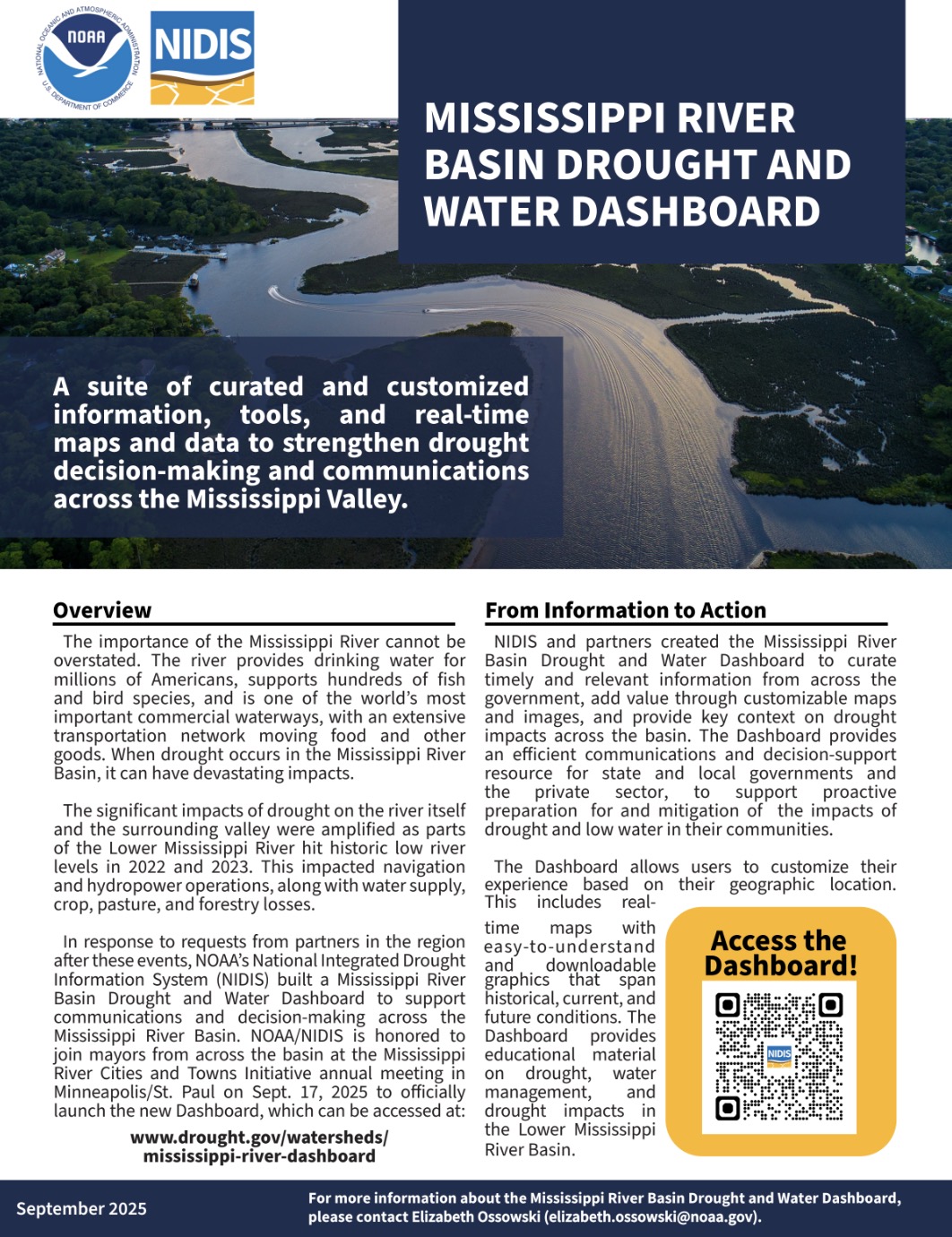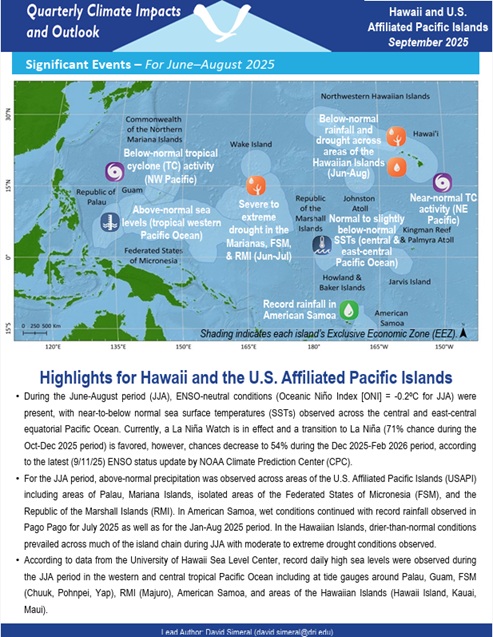Quarterly Climate Impacts and Outlook for the Midwest Region for June–August 2025. Dated September 2025.
Average summer temperatures were 1.1°F above normal for the Midwest. More noteworthy were the record and near-record warm minimum temperatures, particularly in June and July. Drought and dryness affected the northern half of the region to start summer. Above-normal rainfall improved conditions region-wide by mid-summer, but dryness and drought rapidly expanded across the lower Midwest during the last half of summer.
Quarterly Climate Impacts and Outlook for the Southeast and Caribbean Region for June–August 2025. Dated September 2025. (Updated to add Spanish translation of Caribbean information.)
Quarterly Climate Impacts and Outlook for the Great Lakes Region for June–August 2025. Dated September 2025.
Summer air temperature was up to 2°C (4°F) warmer than normal. Record warm June-July low temperatures were measured in 12 U.S. counties surrounding the Great Lakes. Summer precipitation ranged from 25% of normal to 200% of normal.
Quarterly Climate Impacts and Outlook for the Western Region for June–August 2025. Dated September 2025.
Summer temperatures were above normal for most of the West except for isolated areas along the California coast, south central Nevada, and eastern New Mexico. Precipitation was below normal for most of the West, especially in coastal California and the Pacific Northwest. Monsoon season precipitation anomalies were mixed with below-normal totals for most of Arizona and western New Mexico, and above-normal totals for the rest of New Mexico.
Quarterly Climate Impacts and Outlook for the Missouri River Basin for June–August 2025. Dated September 2025.
Temperatures were slightly above normal for the majority of the basin. This summer was also extremely humid, particularly in Kansas, Nebraska, and South Dakota. Precipitation this summer was, for the most part, above normal for the eastern half of the basin. A total of nine counties in Kansas, Nebraska, and South Dakota recorded their wettest summer on record, while another thirty ranked in the top five.
Quarterly Climate Impacts and Outlook for the Northeast Region for June–August 2025. Dated September 2025.
The Northeast had its ninth-hottest summer at 1.2°F above normal. The Northeast had its 19th-driest summer with 78% of normal rainfall. It was among the 20 driest for four states, with New Hampshire being record dry.
Quarterly Climate Impacts and Outlook for the Gulf of Maine Region for June–August 2025. Dated September 2025.
Summer temperatures ranged from near normal to 3°C (5°F) above normal for most areas, with Concord, New Hampshire, having its 10th hottest summer. Summer precipitation ranged from 25% of normal to 90% of normal, with Saint John, N.B., having a record dry summer and several other sites having one of their 10 driest.
Quarterly Climate Impacts and Outlook for Alaska and Northwestern Canada for June–August 2025, with an outlook for October–December 2025. Dated September 2025.
ECCC, NOAA, and partners created these outlooks to inform the public about recent impacts within their respective regions. Each regional report contains easy-to-understand language, and anyone can access them through the U.S. Drought Portal.
This 2-page summary provides an overview of the Mississippi River Drought and Water Dashboard on drought.gov.
The Mississippi River provides drinking water for millions of Americans, supports hundreds of fish and bird species, and is one of the world’s most important commercial waterways, with an extensive transportation network moving food and other goods.
Quarterly Climate Impacts and Outlook for the Pacific Region for June–August 2025. Dated September 2025.


